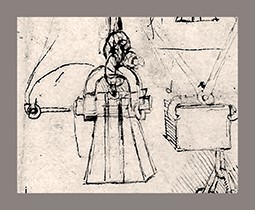Authors: T. Ismaelli, S. Bozza
Download article as .pdf: Olivelle a Hierapolis di Frigia. Analisi tecnologica e morfo-dimensionale dei dispositivi di sollevamento tra Augusto e Alessandro Severo
 The paper deals with the topic of lifting techniques in Asia Minor, with a focus on lewises used in imperial-age public architecture at Hierapolis. By refining the method proposed by William Aylward, a selection of 52 lewis hollows is analysed, in order to understand the morphological and dimensional features of the metal devices used between Augustus and the late Severan period. The typological and dimensional analysis reveals some trends, such as the growth of the hollow size in the 2nd and 3rd centuries AD, the wide range of typological and dimensional solutions during the mid-imperial period, the verticalization of the short sides of the hollows in the Severan age, etc. At the same time, the conservative character of the lewis technique is highlighted. The coexistence of different solutions in the same period, and even in the same monument, represents a significant clue to shed light on the factors acting on the practical choices at the building site. Finally, the Mechanika of Heron, the comparison with Renaissance texts and images, and the traceological analysis of the stone surfaces offer useful indications for reconstructing the exact sequence of the ancient technical gestures.
The paper deals with the topic of lifting techniques in Asia Minor, with a focus on lewises used in imperial-age public architecture at Hierapolis. By refining the method proposed by William Aylward, a selection of 52 lewis hollows is analysed, in order to understand the morphological and dimensional features of the metal devices used between Augustus and the late Severan period. The typological and dimensional analysis reveals some trends, such as the growth of the hollow size in the 2nd and 3rd centuries AD, the wide range of typological and dimensional solutions during the mid-imperial period, the verticalization of the short sides of the hollows in the Severan age, etc. At the same time, the conservative character of the lewis technique is highlighted. The coexistence of different solutions in the same period, and even in the same monument, represents a significant clue to shed light on the factors acting on the practical choices at the building site. Finally, the Mechanika of Heron, the comparison with Renaissance texts and images, and the traceological analysis of the stone surfaces offer useful indications for reconstructing the exact sequence of the ancient technical gestures.
 This article proposes an update of the review of legion veterans inscriptions contained in the volume I veterani di legione in età imepriale romana published in 1999 by the same author. A total of nine new epigraphs are examined, coming from the regiones VII, X and XI. Six of these inscriptions are certainly attributable to legion veterans; the remaining three attribution are dubious, because the noun veteranus is integrated. Each text is analised in its parts, starting from the texts’ present editions, and for some of these new integrations hypothesis are proposed.
This article proposes an update of the review of legion veterans inscriptions contained in the volume I veterani di legione in età imepriale romana published in 1999 by the same author. A total of nine new epigraphs are examined, coming from the regiones VII, X and XI. Six of these inscriptions are certainly attributable to legion veterans; the remaining three attribution are dubious, because the noun veteranus is integrated. Each text is analised in its parts, starting from the texts’ present editions, and for some of these new integrations hypothesis are proposed.
